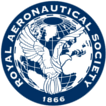A continuing aim from the beginning of manned flight has been to protect occupants in aircraft crashes from the effects of impact. Although aircraft crashes are uncommon they have serious consequences and, in particular, survivability and injury causation are major concerns in both military and civil aviation.
Go Direct to the Audio Recording
Improvements in aircraft crashworthiness, design criteria, personal protective equipment and aircraft escape systems may make injuries preventable or could turn an otherwise non-survivable crash into a survivable one. As injuries can be produced in a number of ways, protection against crash injury requires not only an understanding of the crash environment and the dynamics of the impact, but also of the tolerance of the human to physical forces. The characteristics of injuries seen in aircraft accidents can differ markedly between aircraft types and even within a single accident, there may be dissimilar injury patterns among those individuals involved. An understanding of the causes of injuries or fatalities is critical to improving survivability and identifying the changes which could be made to prevent injuries or fatalities in the future.
This lecture addresses how the development of effective programmes for reducing injuries in aircraft accidents depends on gaining an understanding of how accidents cause injuries, the nature of the forces contributing to the injuries, and the characteristics of the types of accidents under investigation.
2008 Stewart Lecture
Recorded: Tuesday 18 March 2008
Click the above link to download or listen to the full lecture
About the speaker:
Wing Commander Matthew E Lewis, MSc MD DAvMed, MRAeS
RAF Consultant in Aviation Medicine, RAF Centre of Aviation Medicine, Royal Air Force Henlow
Wing Commander Matthew Lewis qualified in Medicine at the University of Wales College of Medicine in 1985. In 1994, he was commissioned into the Royal Air Force and was stationed at RAF Leeming as the Junior Medical Officer.
At the end of 1994, he was posted to the RAF School of Aviation Medicine, Farnborough, to receive specialist training in aviation medicine. In 1998 he was posted to the RAF Centre of Aviation Medicine, Royal Air Force Henlow. He was appointed a Consultant in Aviation Medicine in 2006.
He is presently the head of the Human Factors and Biomechanics Section (formerly Aircraft Accident Investigation Section) of the Centre. Wg Cdr Lewis has been the principal investigator of over 130 aircraft accidents and has carried out extensive research on the issues emanating from these investigations.
He provides expert advice to the UK military commands on all aspects of accident investigation, seat restraint systems, static seat designs, aircraft crashworthiness, impact protection requirements, injury causation, dynamics of assisted escape systems and assessments of aircrew equipment assemblies and survival equipment. His in depth knowledge of human performance under crash and assisted escape conditions is sought internationally and has been instrumental in achieving modifications to current and future aircraft platforms.




